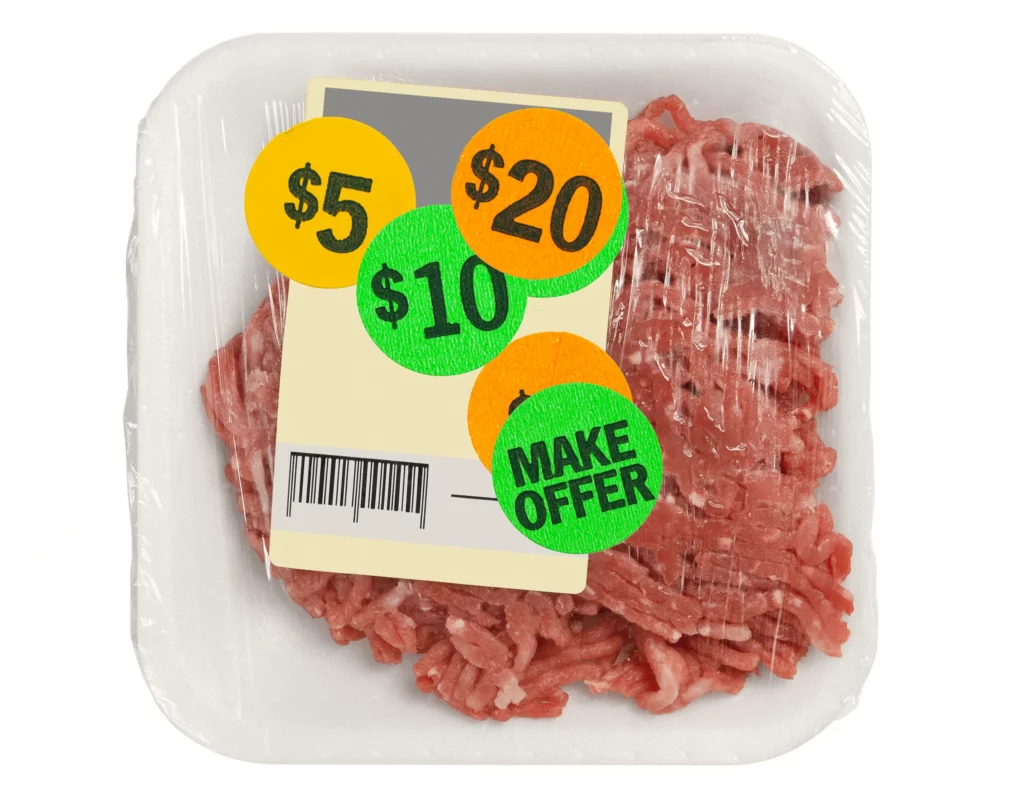
5 Ways Grocers Can Manage Tariffs and Protect Margins
The battle over price has never been more intense for grocers.
American families are already feeling the squeeze from persistent inflation on grocery prices, competition from mass retailers is tougher than ever, and now, a fresh challenge is rapidly emerging: tariffs on imports.
In early March, President Donald Trump announced sweeping 25% tariffs on imports from Mexico and Canada, with additional taxes on countries like China. As of this writing, some proposed tariffs have been temporarily paused for products already under the U.S.-Mexico-Canada Agreement, but the situation remains fluid.
This has put grocers in limbo, facing the potential need to raise prices on essential food and agricultural imports like fresh produce, meat, and dairy. With policy shifts possible at any time, retailers must prepare for ongoing uncertainty and be ready to adapt to increased food costs.
Retail industry leaders have voiced concerns, warning that grocery prices will inevitably rise as tariffs increase the cost of imported goods, resulting in a negative impact on economic growth. The National Grocers Association and Retail Industry Leaders Association have both urged President Trump to reconsider these tariffs, but for now, retailers must focus on what they can control.
We urge the president and his team to reconsider compounding tariffs, including on our closest allies and trading partners, and focus on an agenda that protects family budgets and promotes growth.
Michael Hanson
Senior VP of Public Affairs at the Retail Industry Leaders AssociationThat means grocers must find ways to mitigate the impact of proposed tariffs while maintaining customer trust, even as food prices continue to rise across the United States.
There’s no universal solution. The effects will vary depending on region, supplier relationships, and business size. However, by adopting the right strategies, grocers can protect margins, retain customer loyalty, and build resilience.
This article explores those strategies, outlining practical steps retailers can take to handle the challenge of tariffs and stay competitive.
The Growing Pressure on Grocery Retailers
Before diving into solutions, it’s important to acknowledge the financial pressures that are already weighing on grocery businesses.
Inflation Fatigue is Testing Consumers
Customers are already stretched thin.
Grocery inflation rose 1.9% year-over-year in January 2025, and some categories—such as beef, pork, and dairy—have seen even steeper increases. The idea of paying even more for everyday essentials is a frustrating reality that many households are not ready to accept.
Mass Retailers Have an Advantage in Absorbing Costs
Large grocery chains like Walmart have more leverage with suppliers, allowing them to negotiate better prices and delay passing on larger costs to consumers.
But for independent and regional grocers, absorbing tariffs on imports from Mexico, China and Canada won’t be as easy. These grocers operate on tighter margins and lack the scale to pressure suppliers into lowering costs.
5 Ways Grocers Can Mitigate Grocery Tariffs on Canadian and Mexican Imports
The pressure is certainly mounting, but it doesn’t have to be overwhelming.
Here are five strategic ideas for retailers to lessen the impact of tariffs on your grocery business.
1. Control What You Can
Grocers may not have control over tariffs and trade policies, but they do have control over how they respond.
By focusing on inventory management, supplier diversification, and strategic pricing, grocers can create more stability and flexibility in their operations. While not a perfect solution by any means, these steps will allow grocers to better prepare for the fluctuations in food costs from the proposed tariffs.
Enhance Inventory Management for Stability
With supply chain volatility threatening product availability, leaning into technology for proactive inventory tracking and demand forecasting is essential.
Getting the most from your tech stack is good advice in general, but it becomes even more important now that tariffs could raise prices considerably.
Leveraging real-time data helps keep high-priority products stocked while avoiding excess inventory of tariff-affected goods. A data-driven approach reduces waste, improves purchasing decisions, and strengthens your supplier flexibility.
Diversify Suppliers to Reduce Risk From Proposed Tariffs
Over-reliance on a single supplier makes grocers vulnerable to tariff-driven price hikes.
Expanding supplier networks and prioritizing local sourcing can create greater stability. In practical terms, that means strengthening relationships with domestic producers to mitigate trade-related disruptions while reinforcing local supply options.
Renegotiating contracts has taken on greater urgency, prompting businesses to introduce tariff adjustment clauses that protect them from unexpected cost surges.
Form Buying Groups to Increase Purchasing Power
Independent grocers and smaller regionals can form local buying groups to negotiate better bulk pricing and share supplier resources.
Pooling purchasing power in this way may not result in the same benefits mass retailers enjoy, but it will help secure more competitive pricing and supplier stability.
Develop Private-Label Brands to Offset Rising Food Costs
Private-label products offer better cost control and differentiation.

By partnering with domestic suppliers, grocers can reduce reliance on imports affected by President Trump’s tariffs and offer customers lower-cost alternatives—while also maintaining pricing flexibility.
Adjust Grocery Prices Without Alienating Customers
Speaking of pricing flexibility…
Rather than blanket price hikes, grocers can use strategic pricing tactics to protect margins while also retaining shoppers.
- Bundle related products to increase perceived value and maintain profitability.
- Highlight alternative locally sourced products with better margins and/or lower exposure to tariffs.
- Shift marketing and promotional efforts to locally sourced options to reduce dependence on imports from other countries.
Careful pricing adjustments soften the impact of tariffs while keeping customers engaged.
2. Build Customer Trust Through Transparency
Optimizing inventory, supplier relationships, and pricing strategies can help offset the impact of tariffs, but retaining customer confidence is just as important.
Matching all of the tactics above with clear communication, along with loyalty-driven incentives, can help grocers maintain trust and reinforce long-term shopper relationships, even as tariffs force prices to go up.
Explain Price Changes Clearly
Customers are more likely to stay loyal when they understand why prices are increasing. Transparency creates trust, while unclear or sudden price jumps can create frustration.
In response to the threat of new tariffs, Canada has implemented its own retaliatory tariffs on American products, further escalating trade tensions. These measures have had a direct impact on grocers, prompting them to find new ways to communicate price changes to consumers.
A good example of this is Loblaw, one of Canada’s largest grocery chains, which has placed “T” symbols on affected products to help their customers recognize that higher prices are the result of tariffs rather than retailer-driven markups.
Offer Loyalty-Based Incentives to Offset Rising Costs
Even with transparent pricing, higher cost will always put a strain on consumers. Loyalty programs and personalized promotions can help ease this burden while keeping customers engaged.
By offering targeted discounts on high-impact items, exclusive promotions for loyalty members, or points-based rewards that increase redemption value, grocers can provide tangible value that helps offset higher prices without directly cutting margins.
Train Employees to Handle Pricing Concerns
Pricing changes often lead to frustrated or confused shoppers asking frontline employees for answers. Without proper preparation, these interactions can lead to negative customer experiences.
Grocers should train staff to explain price fluctuations clearly, empathetically, and always with a solution-based reply. This ensures that they can communicate why certain items have increased in cost and what the store is doing to offer value despite the changes.
A well-informed team can defuse frustration at checkout, reinforce shopper trust, and guide customers toward lower-cost alternatives or promotional offerings, turning a potential pain point into a moment of positive engagement.
There’s no getting around the fact that customers aren’t going to like paying more for their groceries. But just remember, they’ll dislike feeling misled or ignored even more.
3. Engage Customers with Smart Digital Strategies
While clear communication and loyalty programs help build trust, technology takes customer engagement even further. It makes grocers capable of offering personalized promotions, shoppable content, and seamless digital experiences—all of which make grocery shopping more affordable and convenient.
Use Personalized Promotions to Offer Affordable Alternatives
When the cost of food goes up, value-seeking behavior increases.
We’ve already seen how shoppers responded to inflation by becoming more likely to compare prices, look for discounts, and switch to lower-cost alternatives. And we can anticipate similar behavior as a result of tariffs on imports from Mexico, China and Canada.
Personalized promotions can help mitigate this by tailoring offers to customer preferences, while:
- Recommending more affordable alternatives to tariff-affected products from other countries.
- Creating dynamic discounting strategies based on customer buying patterns.
- Encouraging bulk purchases or bundled deals to help customers save while maintaining profitability.
By leveraging tech to personalize discounts and product recommendations, grocers can guide customers toward cost-effective choices while reinforcing brand loyalty.
Create Engaging Digital Experiences to Highlight Budget-Friendly Options
Instead of relying on traditional marketing methods, grocers can use dynamic digital content blocks on websites and in mobile apps to actively highlight savings.

Interactive promotions, personalized digital flyers, and in-app recommendations seamlessly integrate into the online and mobile experience, allowing grocers to help customers discover savings without extra effort.
Ensure Seamless Digital Shopping to Retain Customers
Some of the frustration of having to pay more for the same products can be overcome by providing frictionless service on eGrocery orders.
To do this, grocers should consider:
- Maintaining price consistency across in-store, online, and mobile platforms.
- Offering digital coupons that apply across all shopping channels.
- Ensuring fulfillment processes are efficient to prevent stockouts of high-need, lower-cost items.
The goal during this time—and really, at any time—should be to remove barriers to purchasing while making value-driven shopping as convenient as possible.
Maximizing Digital Engagement to Maintain Customer Loyalty
Everything we’re describing above is about using digital innovation as an opportunity to meet shifting needs and reinforce brand loyalty.
Personalized promotions, engaging digital experiences, and increased accessibility help customers feel empowered in their grocery spending—even as prices fluctuate.
However, engagement alone isn’t enough
4. Optimize Operations for Cost Efficiency
Grocers also need to optimize operations to maintain cost-efficiency and offset rising costs. Beyond inventory management, which we touched on earlier, streamlining fulfillment, logistics, and payment flexibility ensures every part of the business runs smoothly and profitably.

When margins are tight, eliminating inefficiencies makes a significant impact.
Improve Order Management and Fulfillment
Inefficient fulfillment processes can quietly erode profitability. Instead of reacting to price changes after they happen, grocers must refine workflows proactively to prevent unnecessary expenses.
Optimizing fulfillment operations can:
- Reduce spoilage and overstocking by improving demand planning.
- Eliminate inefficiencies in labor and logistics that drive up costs.
- Prevent stockouts of high-demand, lower-cost alternatives through accurate order replenishment.
By minimizing waste and improving fulfillment accuracy, grocers can protect margins and maintain stability—even in a fluctuating pricing environment.
Expand Payment Flexibility to Accommodate More Customers
As prices increase, shoppers will not only be looking for better deals, but also more ways to manage their spending.
Flexible payment options can help customers feel more in control of their budgets while also improving sales conversion rates.
To meet customer needs, grocers should look at their current eCommerce platforms and POS systems to ensure they’re able to accommodate:
- SNAP/EBT for online orders to ensure accessibility for low-income households.
- Digital gift cards and store credit incentives to encourage customer retention.
- Contactless and mobile payment options to enhance checkout speed and convenience.
By removing payment barriers, grocers can support customers facing financial strain while also reducing checkout abandonment—helping to maintain revenue in a challenging market.
And that’s really what this section is all about: mitigating the inevitable backlash against higher grocery prices by finding ways to maintain profitability through streamlined fulfillment, optimized labor, and improved payment flexibility.
5. Stay Informed and Adapt Quickly
Optimizing the efficiency of operations allows grocers to stay ahead of most challenges, but it doesn’t mean they can afford to turn a blind eye to emerging developments.
We’ve already witnessed the on-again, off-again nature of these tariffs. Staying up-to-date on the latest information ensures that retailers can adjust quickly to new realities rather than react in crisis mode.
Monitor Market Shifts and Supply Chain Trends
Tracking tariff policies and their impact on food imports will help retailers anticipate changes.
But to get an even better view of what’s happening, keep an eye on supplier costs and product availability while standing ready to adjust sourcing strategies if necessary. It will also be helpful to stay engaged with industry reports and trade associations for insights on sales.
Use Data to Guide Pricing and Promotions
Collecting and consolidating customer data will help identify the best opportunities to maintain sales volume.

With tariffs affecting different products at different times, grocers must take a strategic, data-driven approach to pricing rather than applying broad price increases. To make sure price adjustments protect margins rather than erode them, leverage customer data to fine-tune markdowns and avoid unnecessary discounting.
Prepare for Multiple Scenarios with Contingency Planning
Even with a firm grasp of what’s happening, it’s always a good idea to prepare for the unknown. The ability to adapt to sudden changes in pricing, availability, or customer demand will separate thriving retailers from those struggling to keep up.
Effective scenario planning includes:
- Building alternative supplier relationships to mitigate risk.
- Developing pricing models that adjust dynamically based on cost changes.
- Testing operational efficiencies ahead of peak pricing periods to identify areas for improvement.
By preparing for multiple possible outcomes, grocers can respond quickly when market conditions shift, rather than scrambling to react.
Mercatus Provides the Support Grocers Need in Any Situation
A lot of the strategies for managing tariffs that we’ve identified above are best practices for grocery retail in any market condition.
5 Ways to Mitigate Tariff-Related Challenges
- Control What You Can
- Be Transparent About Prices
- Engage With Customers On A Personal Level
- Improve Operational Efficiency
- Stay Informed On What’s Next
Optimizing operations, strengthening supplier relationships, and enhancing customer engagement are all critical to success in any retail environment. However, the current situation adds a new level of urgency. With the threat of tariffs, grocers need to act quickly and strategically to protect margins and maintain shopper loyalty.
If we look at the best practices we’ve identified throughout this article, Mercatus already provides the insights, technology, and support to help grocers put all of these strategies into action.
- Optimizing operations is essential for cost control: Mercatus provides technology solutions to streamline order assembly, management and distribution for curbside and delivery.
- Building customer trust is more important than ever: The Mercatus platform enables digital engagement that includes personalized promotions, seamless experiences online and in-store, and flexible payment options.
- Staying informed allows grocers to stay ahead: Mercatus delivers regular industry insights and analytics to help retailers track market shifts, anticipate cost fluctuations, and make smarter business decisions.
- Adapting quickly requires the right infrastructure: Our scalable, future-ready solutions are easily integrated and ensure grocers can pivot without operational disruptions, no matter what challenges arise.
With Mercatus, grocers don’t have to face the challenge of tariffs alone. We work as a true partner, helping grocers leverage the right strategies, technology, and support to deal with uncertainty.
Let’s work together to ensure your grocery business is ready for whatever comes next. Set up a strategy session today.
 All-new AisleOne
All-new AisleOne
 Integrations
Integrations
 Newsroom
Newsroom
